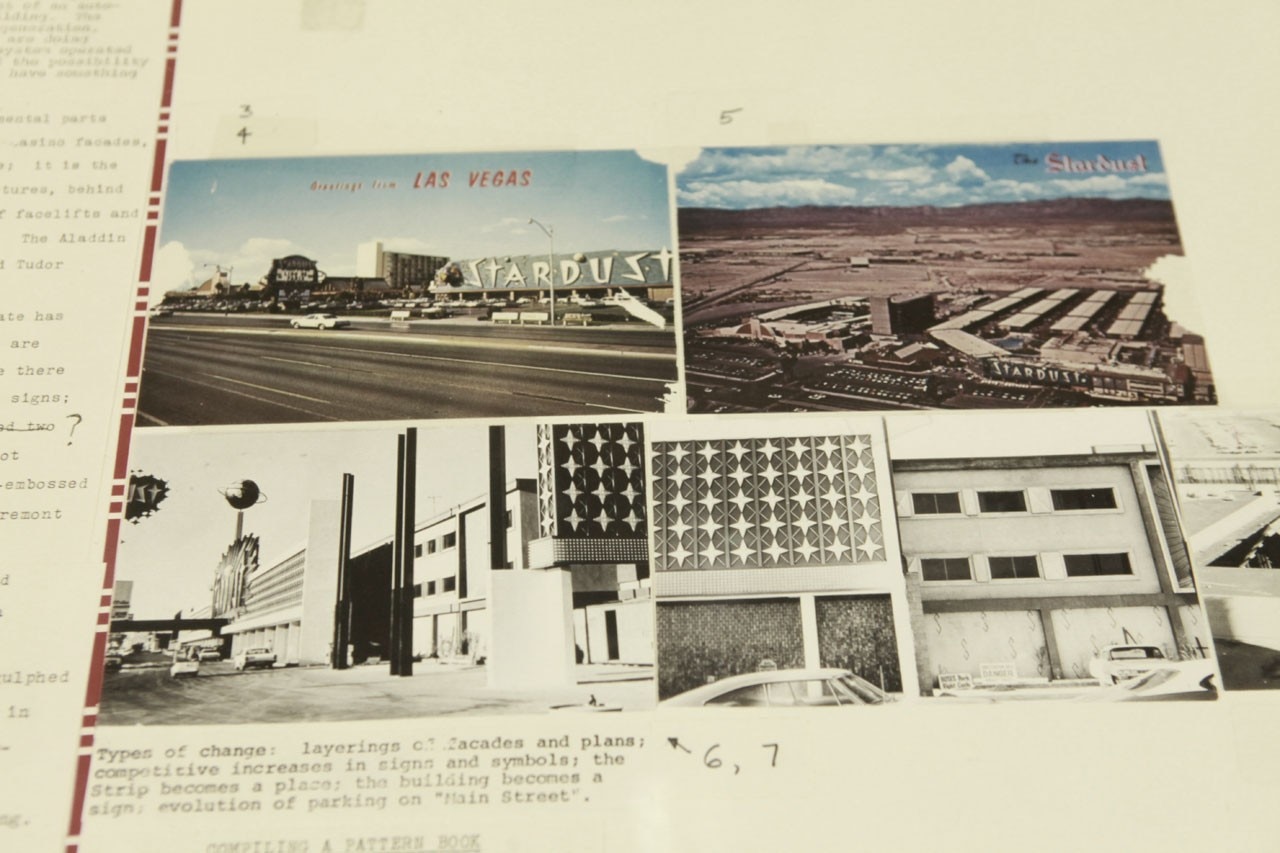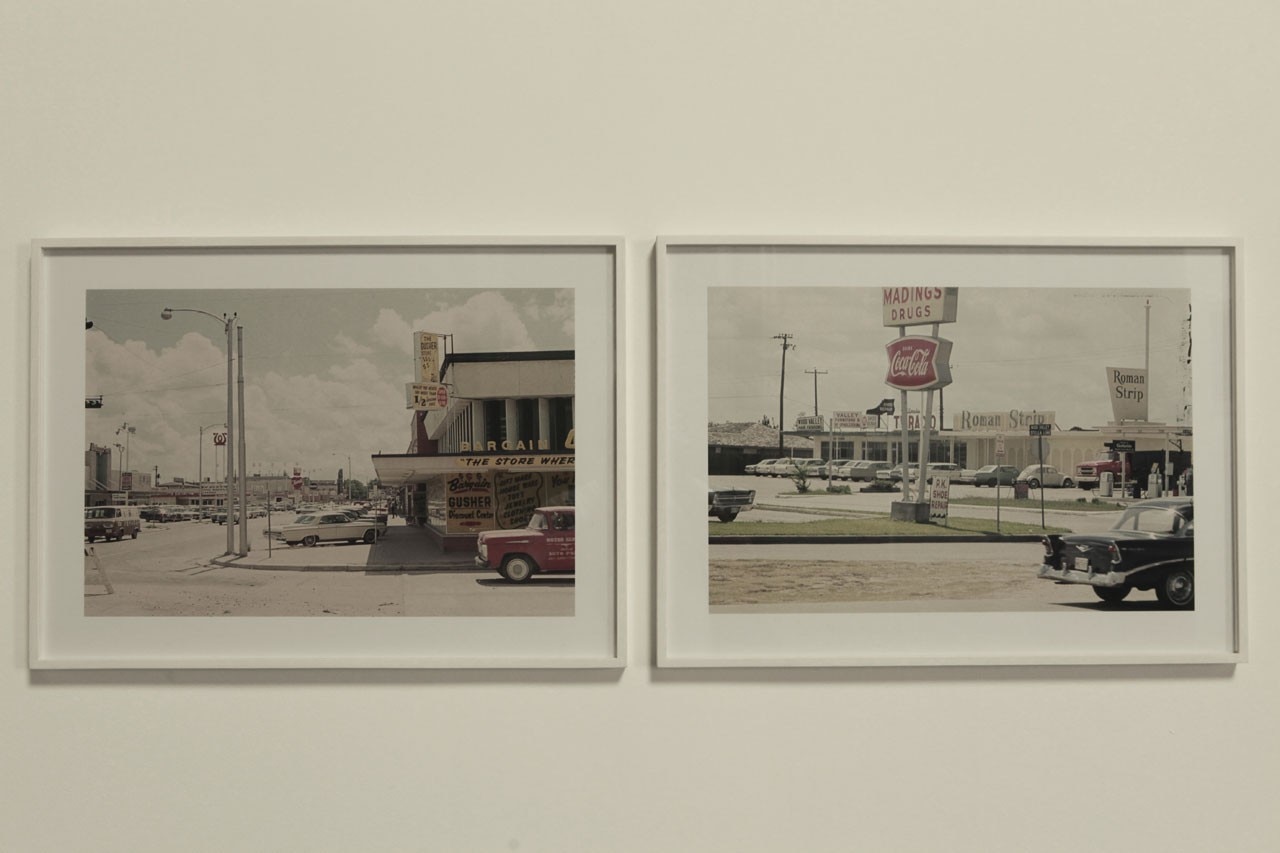
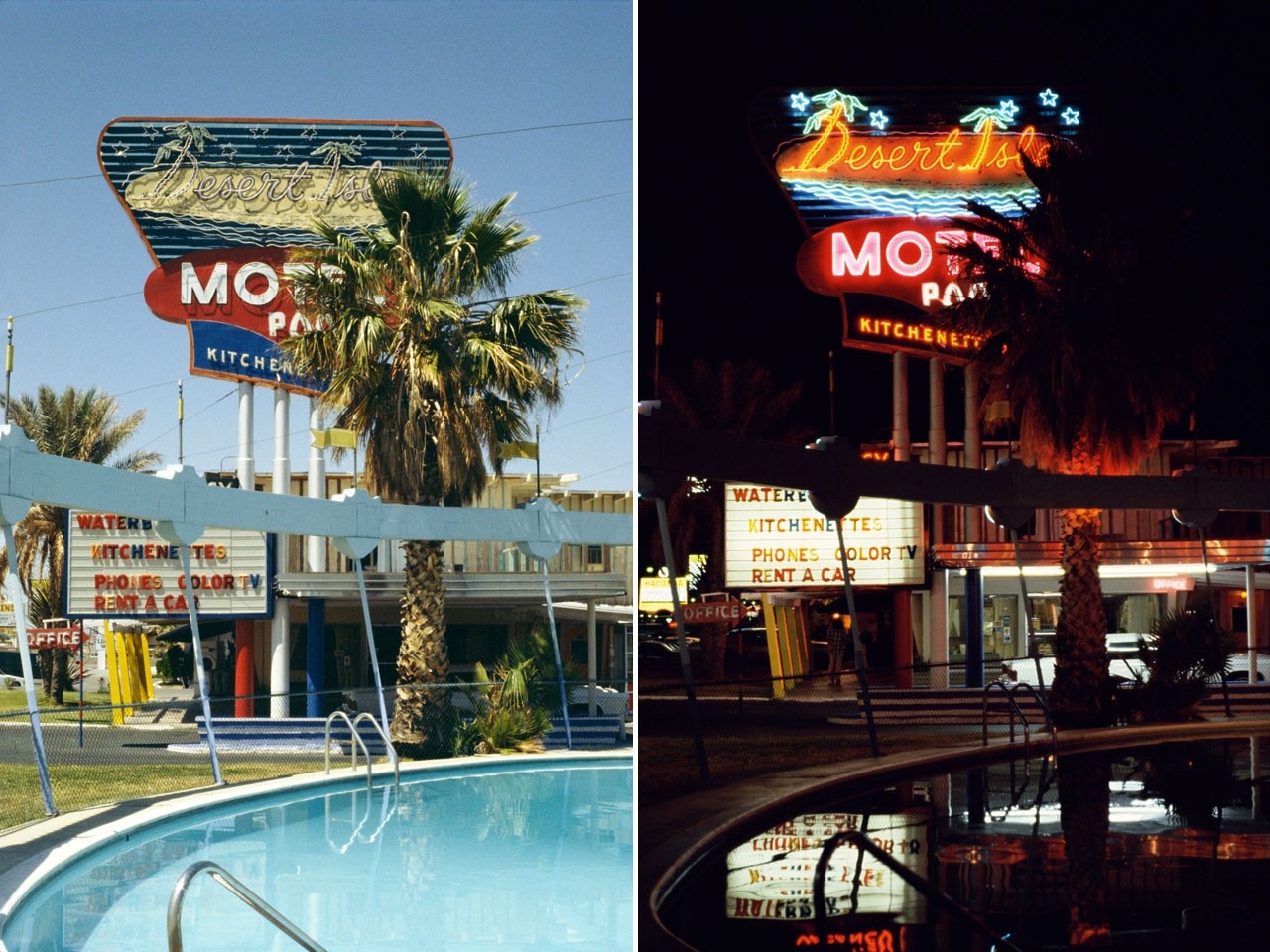
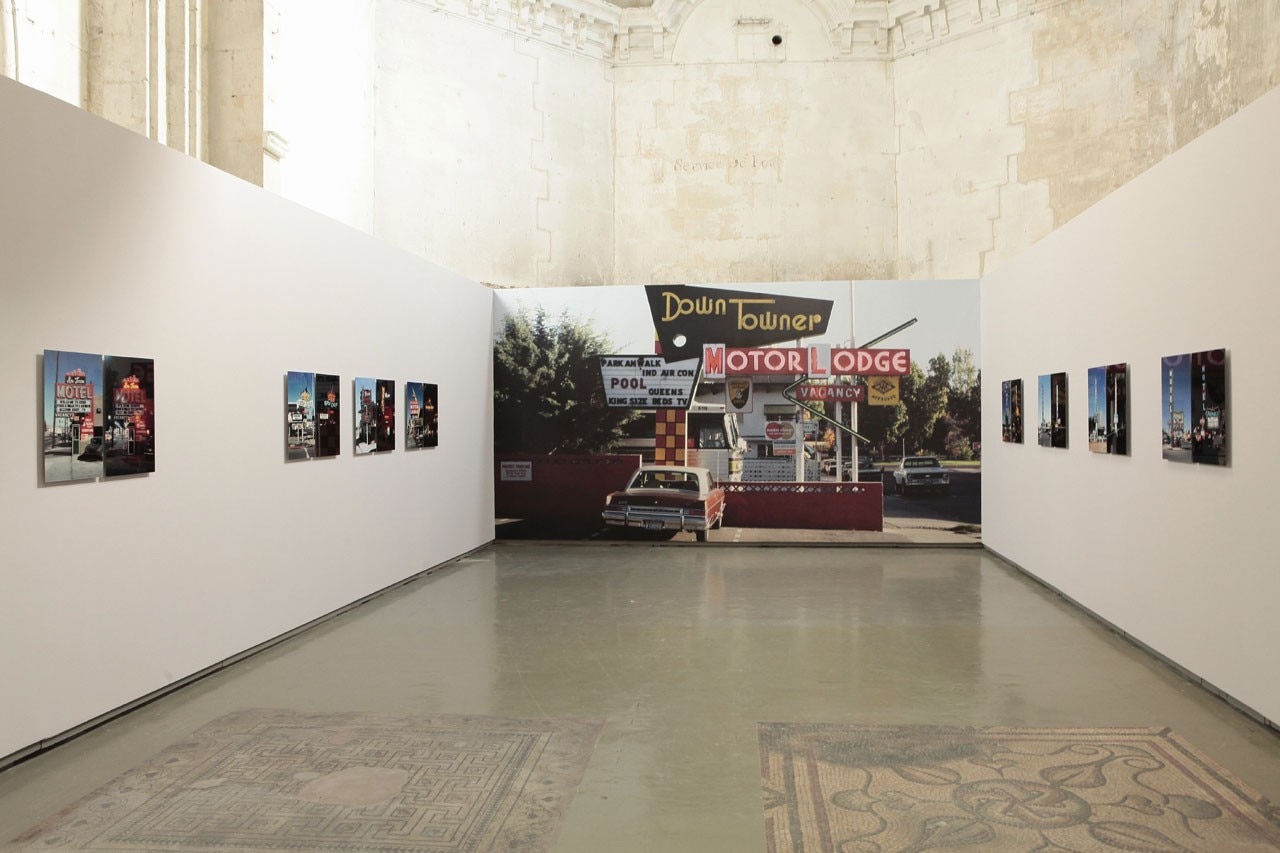
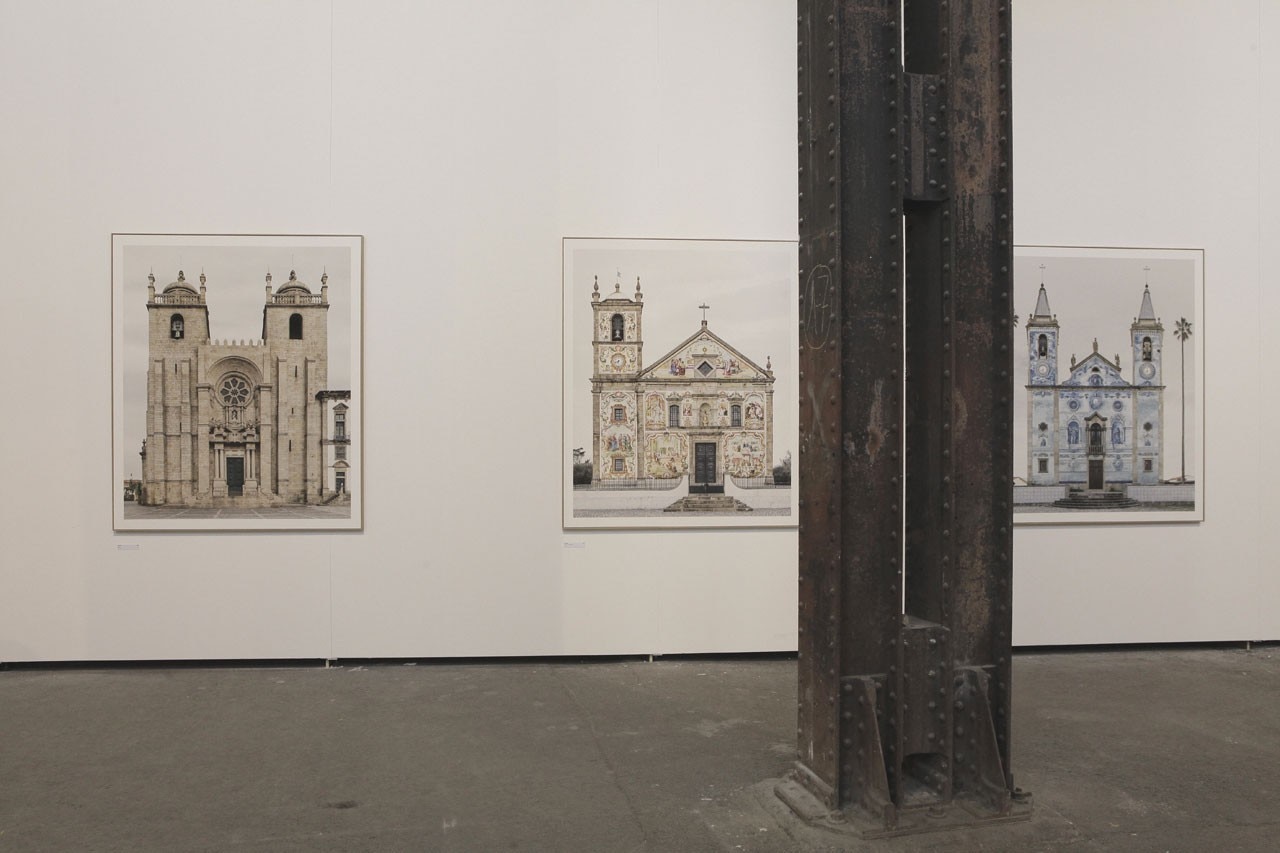
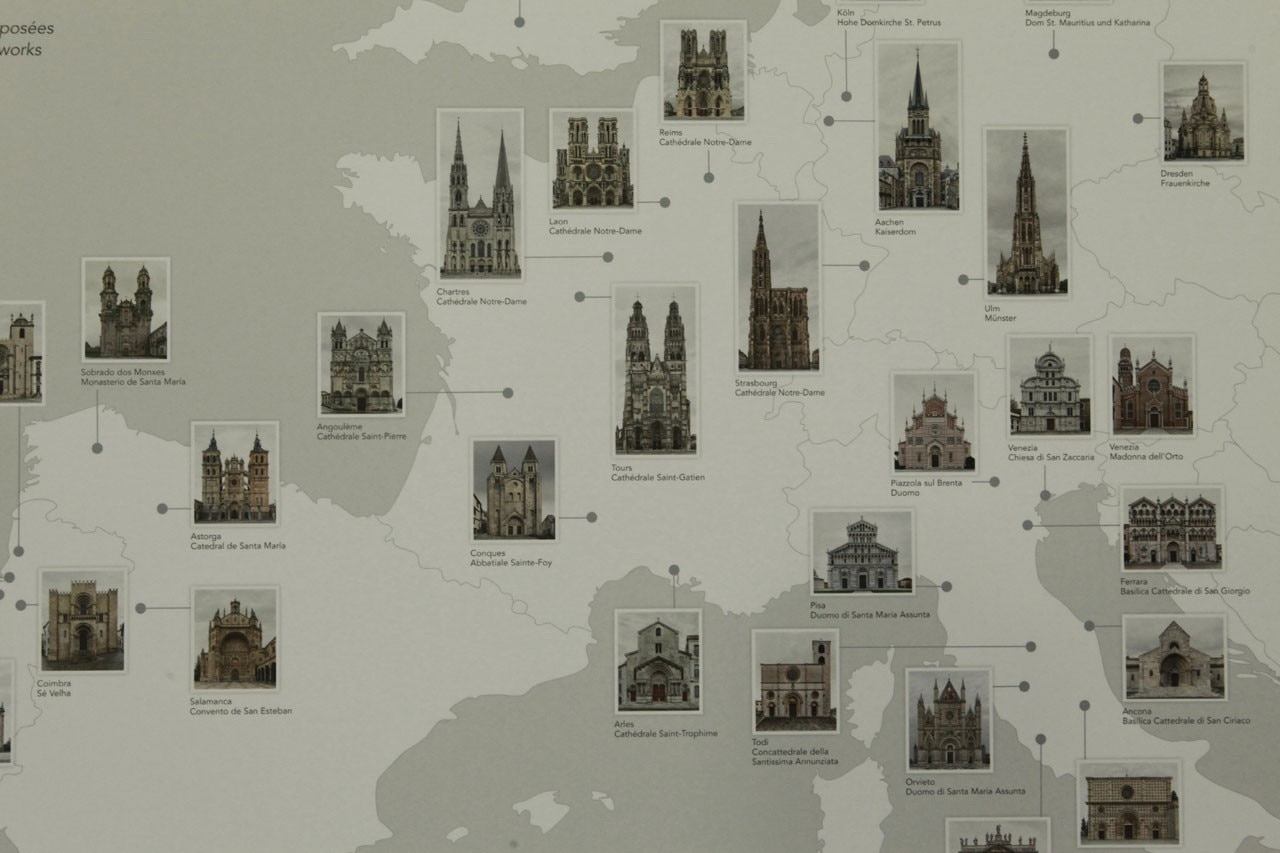
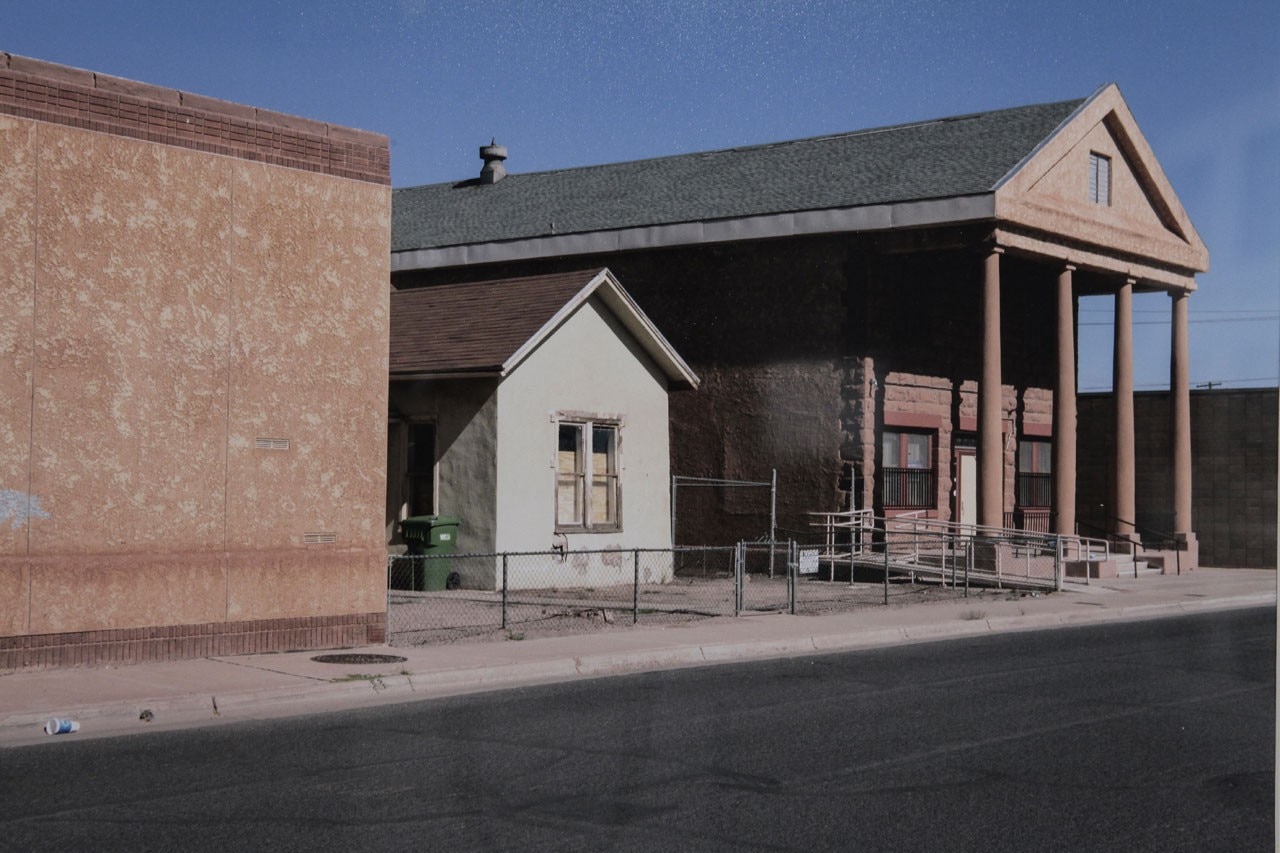
Armed, like all good surveyors, with his maps for interpretation, Stephen Shore beat his path on a road trip, travelling on foot and by car, and lingered on the scenes that form the everyday environment. This enabled Shore to compile a report on the places of America, in contrast to the great iconic American landscapes.
Having emancipated himself from black and white abstraction, he homes in on materials, dwelling on special moods and the other constituent elements of urbanisation such as street junctions, drive-in car parks and advertising hoardings. These series are visual cross-sections of the land, often empty spaces that look almost like theatre sets awaiting a performance or a use, thus reinforcing the instantaneous concept that allows observers to imagine a before and an afterwards.
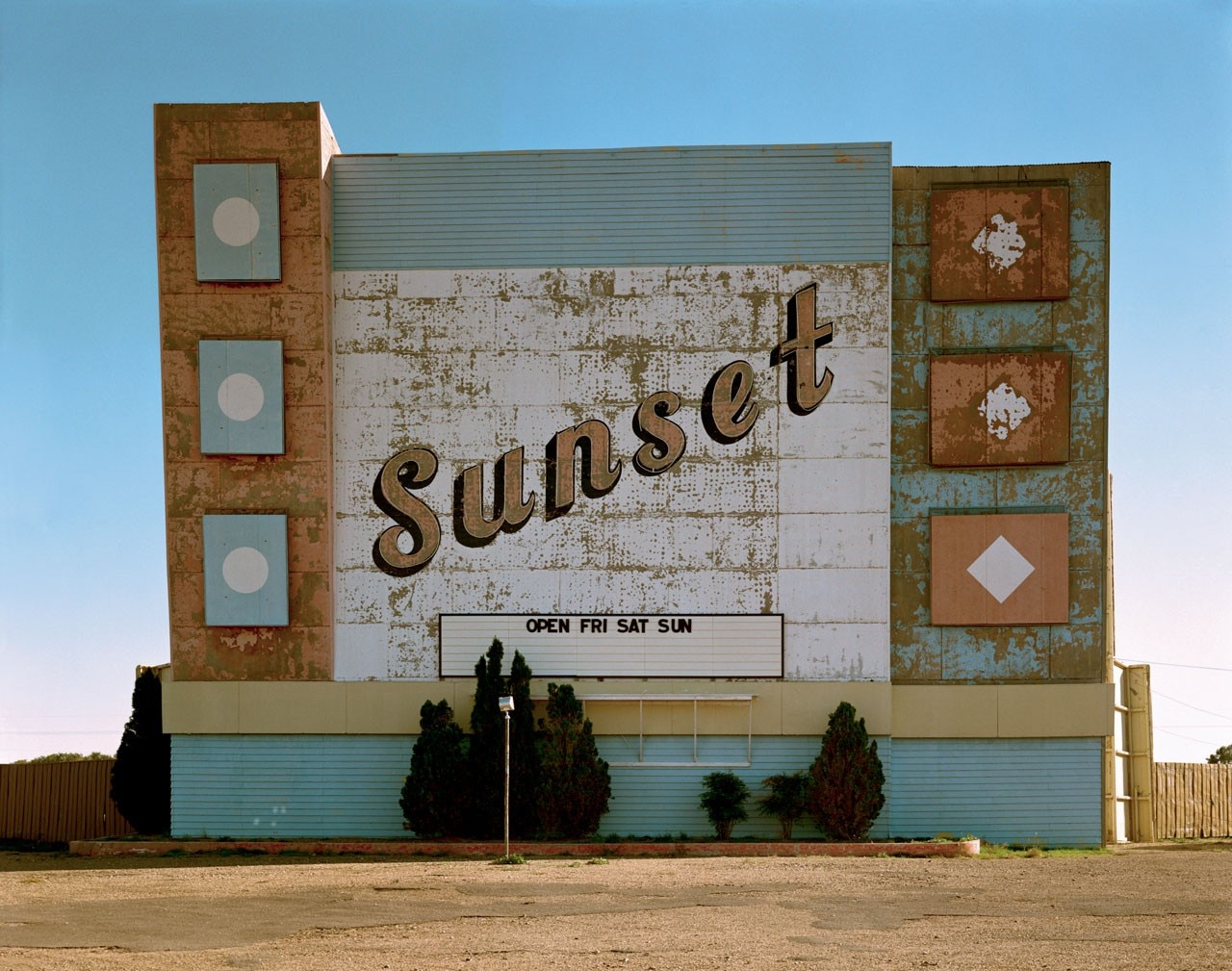
until 20 September 2015
Arles 2015. Les rencontres de la photographie


